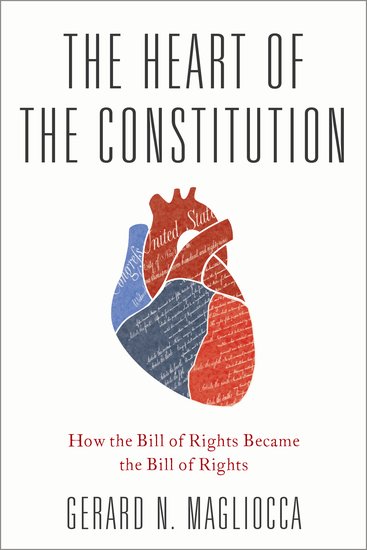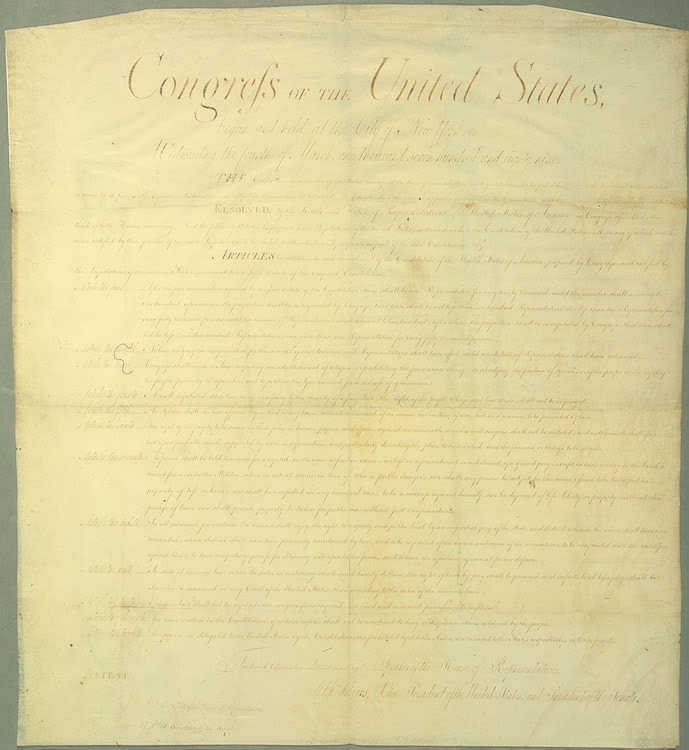Texas Governor Greg Abbott released a 90-page document detailing nine amendments that could be considered by state constitutional conventions. The document is titled “Restoring the Rule of Law with States Leading the Way.” Here is a summary of the 9 proposed amendments, dubbed The Texas Plan.
- Prohibit Congress from regulating activity that occurs wholly within one State.
- Require Congress to balance its budget.
- Prohibit administrative agencies—and the unelected bureaucrats that staff them—from creating federal law.
- Prohibit administrative agencies—and the unelected bureaucrats that staff them—from preempting state law.
- Allow a two-thirds majority of the States to override a U.S. Supreme Court decision.
- Require a seven-justice super-majority vote for U.S. Supreme Court decisions that invalidate a democratically enacted law.
- Restore the balance of power between the federal and state governments by limiting the former to the powers expressly delegated to it in the Constitution.
- Give state officials the power to sue in federal court when federal officials overstep their bounds.
- Allow a two-thirds majority of the States to override a federal law or regulation.
Numbers 5 and 6, which concern the judiciary, and number 8 which concerns standing, are really interesting proposals.
Under Proposal #5, states would convene conventions to overturn Supreme Court decisions:
The Texas Plan supplies that accountability. It would allow States to convene assemblies for the purpose of overturning the Supreme Court’s misinterpretations of the Constitution. In particular, the States could convene an assembly on the vote of 26 States. The States could pick their delegates to those assemblies, and the assemblies could meet as often as the States deem necessary. At the assembly, a two-thirds super-majority of state delegates would be required to overturn a Supreme Court decision. But once the super-majority requirement is met, the assemblies could overturn the Court’s decisions in whole or in part. They could overturn the Court’s decisions retroactively or prospectively. They could vitiate the precedential effect of the Court’s decisions and remand cases to the Supreme Court for further proceedings. In short, the assemblies would restore the people—rather than five unelected jurists—to the role of the truly supreme arbiter of the Constitution.
Proposal #6 imposes a super-majority of 7 votes, rather than 5 votes, for the Supreme Court to invalidate a law:
The Texas Plan fixes that anomaly by imposing the same super-majority requirement for Supreme Court decisions (three-fourths) that Article V already imposes for constitutional amendments. Not only is a super-majority already required by Article V, a super-majority also is a familiar requirement for courts. Every criminal jurisdiction in the United States requires a super-majority (if not complete unanimity) of jurors for criminal convictions. The purpose of those requirements is to mitigate the risk that a bare majority would get the answer wrong. If that concern is valid in individual criminal cases, and everyone agrees it is, the same is certainly true for the highest legal question our system ever could ask—namely, whether a particular thing is or is not unconstitutional.
The proposal cites Nebraska and North Dakota, whose Supreme Courts also need super-majorities to invalidate laws:
And lest anyone worry that this portion of the Texas Plan is unworkable or radical, super-majority requirements for judicial invalidations of statutes already exist in two States. Nebraska has a seven-member Supreme Court, and in 1920, it amended its Constitution to say: “[a] majority of the members sitting shall have authority to pronounce a decision except in cases involving the constitutionality of an act of the Legislature. No legislative act shall be held unconstitutional except by the concurrence of five judges.”260 And since 1976, North Dakota’s Constitution has imposed an even stronger super-majority requirement: it requires four out of five justices to strike down legislation.261 The sky has fallen in neither State.
The proposal also notes that this could be accomplished by a statute, but the Court would likely invalidate it:
Members of the modern Court have suggested that such congressional efforts are unconstitutional where they interfere with the Court’s conception of its own “essential functions.”268 Given the Court’s jealousy of its power to “say what the law is,”269 and given how far the Court has gone to arrogate to itself additional powers over the decades, there is a substantial risk that the Court would invalidate a statute imposing a super- majority requirement on its power to declare a statute unconstitutional. Thus, the safer route is a constitutional amendment.
Proposal 8 gives states standing to sue federal officials in federal court when the federal government acts unlawfully.
The best (if not the only) way to restore the Tenth Amendment’s intended protections is to give State officials broad rights to enforce it in court. That is, States should receive “special solicitude” to sue the federal government.325 And the Texas Plan would prevent courts from ducking claims by state officials against the unlawful actions of the federal government. Without consistent and uniform judicial redress, the States are in an untenable position and the Tenth Amendment becomes virtually unenforceable in the ordinary case: the federal government can violate the Constitution, exceed its enumerated powers, abuse the States and denigrate the States’ prerogatives, and the States are powerless to stop it. That deprives the States, and their citizens, a right guaranteed by the Founders. Again, as with so many parts of the Texas Plan, this Tenth Amendment reinforcement does not protect the States as ends in themselves. The point is that the rule of law requires someone to keep the federal government in check. And the States—with judicially enforceable rights to challenge breaches of the enumerated powers—are the ideal parties to do it.
The Texas Plan also addresses concerns about a “runaway convention,” and suggests the states can by statute limit the scope of the amendments to be considered:
It is true that Article V does not expressly authorize States to limit conventions to particular issues—but the problem for would-be critics of the Texas Plan is that Article V also does not require general and open-ended conventions. Indeed, that is by design. As noted above, the whole point of the second path for proposing amendments was to empower States to propose amendments to the Constitution.
There is a lot to consider in this plan. It cites may legal scholars, including Gary Lawson, Randy Barnett, Richard Epstein, David Currie, Steve Calabresi, Phillip Hamburger, Gerard Magliocca, Ilya Somin, Ernie Young, and others.
That the Governor of one of the most populous and prosperous states in the Union released it adds a significant gravitas to the proposal. It’s possible that other states will latch onto the plan.
I often tell my students that they will likely never see a constitutional amendment ratified in their life time. But if we get to 2/3 of the states, we may have a convention. What a fascinating exercise that would be!

